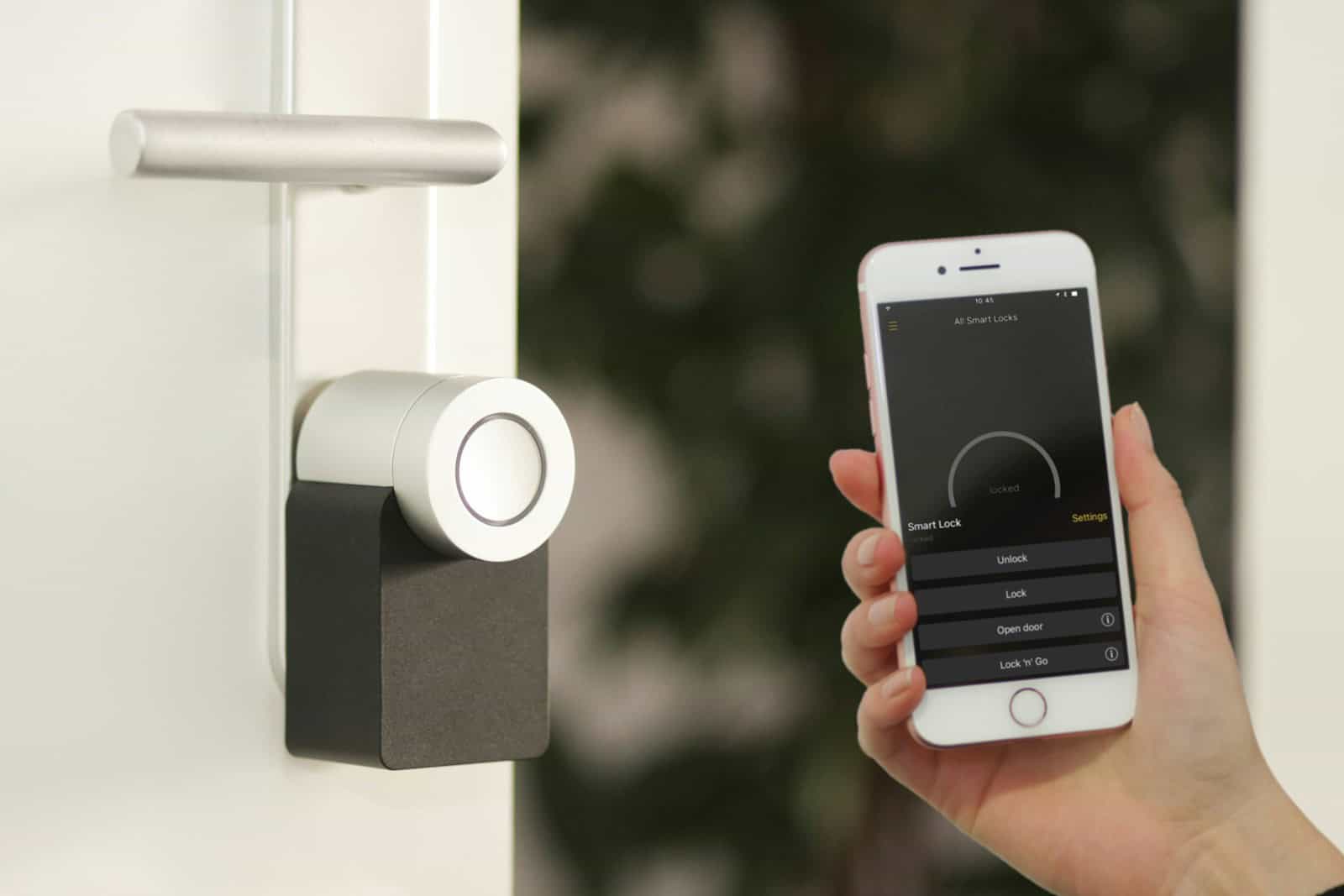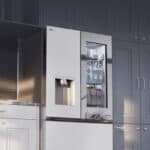Smart locks are like traditional locks but with a twist. They keep doors secure and can talk to devices like phones. You can lock and unlock your door with a smart lock using your phone, a code, or even your fingerprint. This is great for people who hate carrying keys or who might forget them.
With smart locks, your home becomes part of the smart world. These locks connect to the internet. That means you can control them even when you’re not home. It’s all about making life easier and keeping your home safe. You don’t need to change your whole door, just the lock part.
Smart locks can do something cool. They can tell you if your door is locked or not when you’re at work or away. They can even let friends in when you’re not there. Kids can get in after school with a code. You don’t need to hide a key under the mat anymore. Smart locks have made home security simple and smart.
A Peek Behind the Keyless Entry Technology
Smart locks are revolutionizing home security, offering convenience and advanced features that traditional locks lack. But how do these clever devices actually work?
The Mechanics of Smart Locks
At their core, smart locks replace the traditional keyed cylinder with an electronic locking mechanism. This mechanism can be controlled in various ways, depending on the specific lock model and features.
Common Locking Mechanisms in Smart Locks
- Motorized Deadbolt: The most common type, using a small motor to extend or retract the deadbolt.
- Solenoid Lock: An electromagnetic lock that uses a solenoid to move the bolt.
- Latch Bolt: Similar to a standard door latch, but electronically controlled.
Keyless Entry Methods
Smart locks offer a variety of keyless entry methods, providing flexibility and convenience.
| Method | Description |
|---|---|
| Keypad | A physical keypad on the lock for entering a PIN code. |
| Smartphone App | Control the lock remotely or grant access to others using a dedicated app. |
| Keycard or Fob | A physical card or fob that communicates with the lock wirelessly. |
| Biometrics | Fingerprint or facial recognition for unlocking the door. |
| Voice Control | Integrate with smart home systems for voice commands like “Unlock the door.” |
| Geofencing | Automatically unlocks the door when you approach your home and locks it when you leave. |
Communication Technologies
Smart locks use various communication technologies to connect with other devices and enable remote access.
- Bluetooth: Short-range wireless communication used for direct connection with smartphones or key fobs.
- Wi-Fi: Connects the lock to your home network for remote access and integration with other smart home devices.
- Z-Wave or Zigbee: Low-power wireless protocols used for communication with other smart home devices.
Additional Features
Many smart locks offer additional features beyond just keyless entry, such as:
- Activity Logs: Track who enters and exits your home and when.
- Temporary Access Codes: Create unique codes for guests or service providers.
- Integration with Smart Home Systems: Control your lock alongside other smart devices like lights, thermostats, or security cameras.
- Remote Locking/Unlocking: Lock or unlock your door from anywhere with an internet connection.
- Auto-Lock: Automatically locks the door after a set time.
- Tamper Alerts: Notifies you if someone tries to force the lock or tamper with it.
Understanding Smart Lock Technology
Smart lock technology brings keyless entry and added security to homes. It uses electronic systems to lock and unlock doors.
The Evolution of Locking Mechanisms
Locks have changed a lot. Long ago, we had simple locks with keys. Now, there are smart locks. Smart locks use electronics instead of keys.
How Smart Locks Enhance Home Security
Smart locks use keypads and smartphones for entry. You don’t need physical keys. They also have features like access logs and encryption that make your home safer.
Key Components of Smart Locks
Smart locks have parts like deadbolts, keypads, and often connect to Bluetooth or Wi-Fi. These parts work together for safe and easy access. Fingerprint scanners are another feature some smart locks offer, which adds even more security by using biometric data to manage entry.
Installation and Integration
Installing a smart lock is simple and can provide improved security. Through a mobile app, a smart lock interfaces with smart home systems. Here are steps for setting up and integrating your smart lock.
Setting Up Your Smart Lock
First buy a smart door lock. Use the manual to replace your old lock. Check that batteries are in place as most smart locks are battery-powered. If confused, some people use professional installation. But many can do this with basic tools.
- Remove the old lock.
- Place the new smart lock.
- Secure it with screws.
Now connect the smart lock to your smartphone app. Here is how:
- Download the mobile app.
- Make an account.
- Follow the app steps to add your new lock.
Integrating with Smart Home Ecosystems
Smart locks work with systems like Google Home and Amazon Echo. To connect your smart lock:
- Open your smart home device app.
- Find the option for new devices.
- Choose your smart lock from the list.
- Follow the steps to link them.
Now you can use voice commands through Alexa or other assistants. This is handy for everyday tasks like locking doors.
Maintaining and Troubleshooting
Check your smart lock’s health often. Replace batteries before they die. If problems pop up, look at these steps:
- Check the power source.
- Look at the app for error messages.
- Restart the lock or your phone if needed.
For backup systems, know how to use a key or other methods in case your smart lock’s battery dies. Keep your software up to date for the best performance and security.
Smart locks must match your smart home devices for smooth integration. Always verify compatibility before buying a new smart lock.
Frequently Asked Questions
Smart locks are changing the way we secure our homes. They use technology for locking and unlocking doors. Here are common questions people ask about smart locks.
What are the different methods of authentication used by smart locks?
Smart locks can be unlocked in several ways. They use codes, smartphones, or even your fingerprint. You can pick the method that works best for you.
In what ways can smart locks be integrated with home automation systems?
They fit right into home automation. You can control smart locks with other smart devices. Lights and alarms can work with your locks for better security.
What backup options are available for smart locks during power failures?
Smart locks often have a backup. They might use batteries. Some have a key slot. This means you can still get in if the power goes out.
How do smart locks ensure security and prevent unauthorized access?
They use encryption. This keeps your lock’s signals safe. They may also have alarms and will alert you if something’s wrong.
What are the potential vulnerabilities or drawbacks of using smart locks?
Every device has weak spots. Hackers could try to break in. Your lock might run out of batteries. It’s important to know these and stay prepared.
How are smart locks managed and controlled remotely?
You can use an app for your smart lock. It lets you lock and unlock from anywhere. You can also give others access or take it away with this app.







